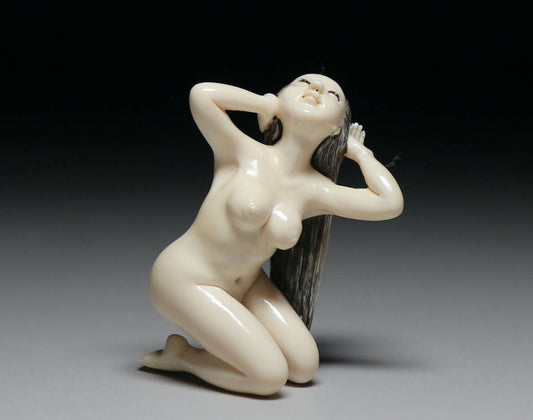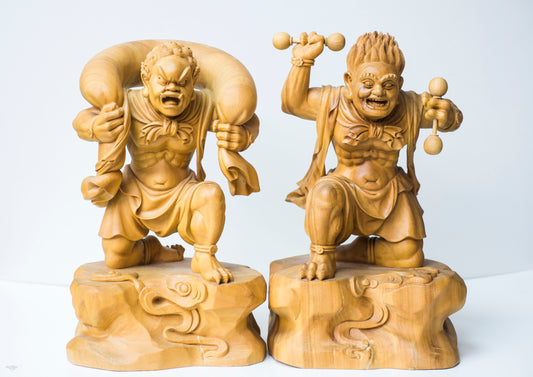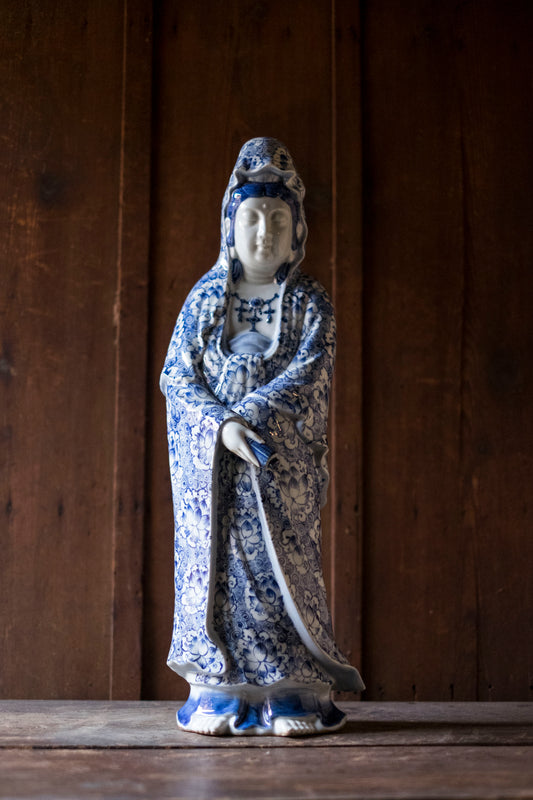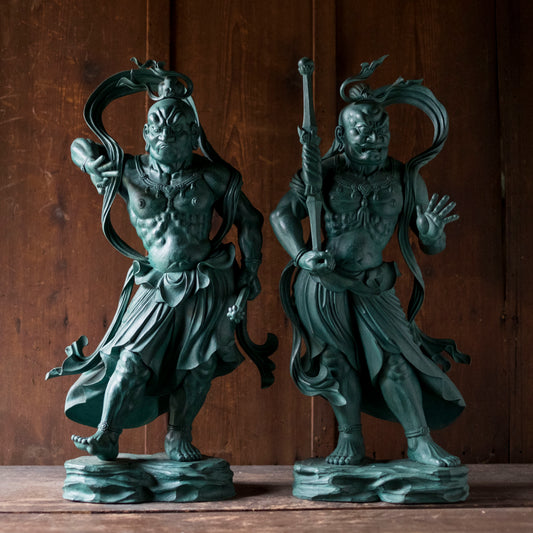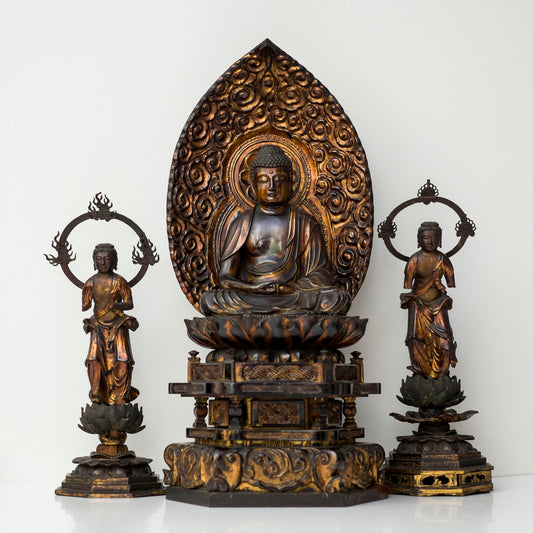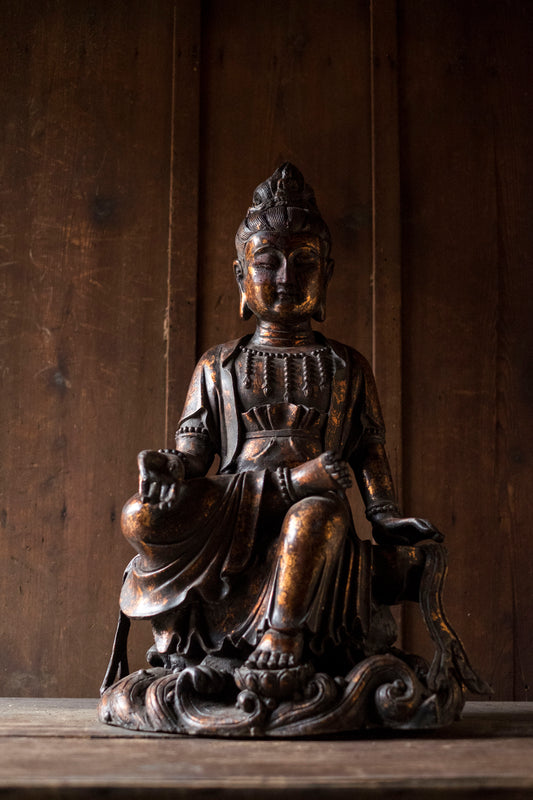Collection: Japanese Vintage and Antique Collectibles
Japonisme is an art movement and cultural phenomenon that originated in Europe during the late 19th century. It refers to the strong influence of Japanese art, aesthetics, and culture on Western art, design, and fashion. Japonisme had a significant impact on the visual arts, particularly in France, where it gained prominence and influenced artists and designers such as Vincent van Gogh, Claude Monet, and Henri de Toulouse-Lautrec.
Key features of Japonisme include:
-
Ukiyo-e Prints: Japanese woodblock prints, known as ukiyo-e, were a major source of inspiration for Western artists. These prints featured scenes of everyday life, landscapes, and historical subjects. Western artists were particularly drawn to the bold colors, flat compositions, and intricate details of ukiyo-e prints.
-
Simplicity and Elegance: Japanese art and design emphasized simplicity, asymmetry, and a focus on the natural world. This contrasted with the more ornate and formal styles prevalent in Europe at the time.
-
Influence on Impressionism: Japonisme played a significant role in the development of Impressionism. Artists like Monet and Degas were influenced by Japanese aesthetics in their use of light, color, and composition. They often incorporated elements of Japanese art into their own works.
-
Decorative Arts and Design: Japonisme had a profound impact on European decorative arts and design. It influenced the design of furniture, textiles, ceramics, and other decorative objects. The Art Nouveau movement, which emerged in the late 19th century, also drew inspiration from Japanese forms and motifs.
-
Fashion: Japanese textiles and clothing, such as kimono and obi, influenced Western fashion. European designers incorporated Japanese patterns and fabrics into their creations.
-
Cultural Exchange: Japonisme was a result of increased cultural exchange between Japan and the West during the Meiji era (1868-1912) when Japan opened up to the world. Japanese art and goods began to be exported to Europe, leading to a fascination with Japanese culture.
Japonisme represents a cross-cultural exchange that had a lasting impact on Western art and design. It contributed to the development of new artistic movements and a broader appreciation for the beauty and aesthetics of Japanese art and culture. The influence of Japonisme can still be seen in various aspects of Western art and design today.
Japanese vintage and antiques refer to collectible items, artworks, and objects that are typically old or from a bygone era in Japan's history. These items can include a wide range of products, such as:
-
Furniture: Vintage Japanese furniture includes items like tansu chests, traditional futon beds, and kotatsu tables. These pieces often reflect traditional Japanese craftsmanship and design.
-
Ceramics and Pottery: Japanese ceramics and pottery are highly sought after. This category includes items like tea sets, sake sets, vases, and various tableware. Notable styles include Arita, Imari, Satsuma, and Bizen ware.
-
Textiles: Vintage Japanese textiles include kimono, obi (sashes worn with kimono), and various other traditional clothing items. They often feature intricate patterns and craftsmanship.
-
Art and Prints: Japanese woodblock prints (ukiyo-e), calligraphy, and other forms of art from different periods are considered antiques. Renowned artists like Hokusai and Hiroshige have produced famous woodblock prints.
-
Swords and Blades: Japanese swords, including katana, wakizashi, and tanto, are highly collectible. They are not only functional weapons but also pieces of art and craftsmanship.
-
Lacquerware: Traditional Japanese lacquerware, known for its glossy and durable finish, is often considered antique. Items include bowls, trays, and decorative pieces.
-
Antique Dolls: Japanese antique dolls, such as kokeshi and ningyo, are collectible items that represent different regions and styles.
-
Porcelain: Antique Japanese porcelain, such as Kutani or Nabeshima ware, is known for its exquisite craftsmanship and decorative techniques.
-
Bamboo Crafts: Vintage Japanese bamboo crafts include baskets, tea utensils, and other functional items made using traditional bamboo weaving techniques.
-
Sake Ware: Antique sake cups, bottles, and related utensils can also be considered collectible antiques.
Collectors and enthusiasts often seek out these items for their historical, artistic, and cultural significance. Japanese vintage and antique items can vary greatly in terms of age, rarity, and value, so it's essential to research and assess the authenticity and condition of any antique or vintage piece before making a purchase. Additionally, many of these items may be available through specialized dealers, auctions, or antique shops that focus on Japanese art and antiques.

